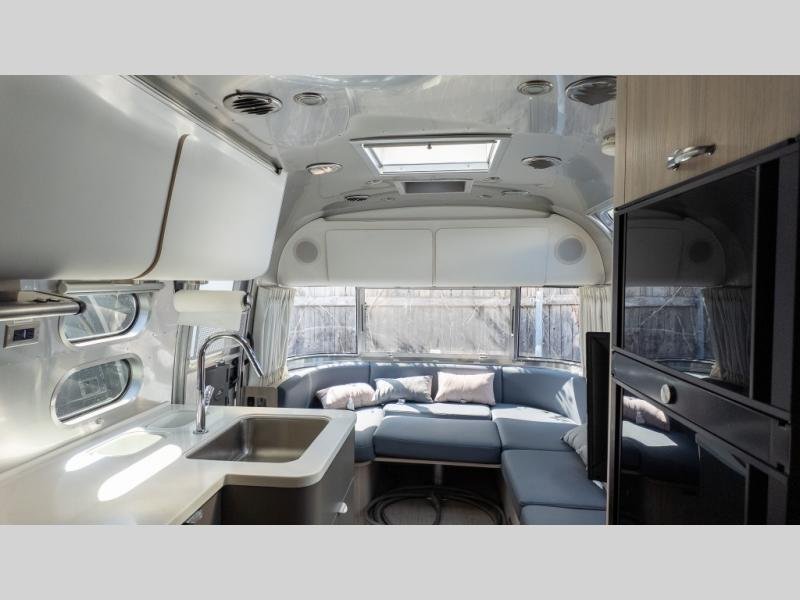Travel
Class A vs Class C Motorhomes: Which Fits Your Texas Road Trips Best?
Published
2 days agoon
By
Alexander
There’s a compelling reason why the Lone Star State remains one of America’s most inviting places for RV travel: vast open highways, dramatic scenic routes, and a hugely diverse terrain that spans deserts, hill country, forests, coastlines, and plains.
Whether you’re winding through Big Bend National Park’s rugged vistas, exploring the piney woods of East Texas, or cruising along the Gulf Coast, Texas offers huge mileage and big skies for the adventurous roadtripper.
For those considering ownership, checking out Used RVs in DFW can be a great starting point to find a motorhome that fits your needs. In that context, the decision to go motorhome, and what kind of motorhome, becomes especially important.
The choice between a Class A and a Class C motorhome is more than just about size; it’s about how you travel, where you stay, how you drive, and how you want to live. This article is meant to help you pick the right motorhome class for your Texas road‑trip lifestyle: your travel style, your budget, and the routes you care to explore.
While exploring life on the road in your diesel pusher motorhome, finding cozy stops along the way makes the journey even better. If you love discovering unique coffee spots, check out Best Cafes UK for inspiration on charming cafes and inviting atmospheres
What is a Class A Motorhome?
The Class A motorhome is the largest, most residential‑style type of motorhome. As one summary puts it: “Class A motorhomes are built on a very robust, heavy‐duty frame on a commercial truck or bus chassis.”
They often resemble a bus in shape, a flat or vertical front end, large side windows, and a body that’s more “home on wheels” than “van on wheels.”
You’ll typically find:
- Spacious interiors, sometimes multiple slide‑outs to expand the living area.
- Large kitchens, full bathrooms, walk‑around beds, and often luxury finishes.
- Built for comfort, for longer stays, for more “home-based” type living rather than just weekend trips.
Pros of Class A
- Luxury/comfort: Big interiors with more room to move, more dedicated living space, larger furnishings.
- Space & storage: More room for slide‑outs, more exterior storage compartments, more cargo carrying capacity. For example, someone noted that between a Class A and a Class C, the Class A “will have more cargo capacity and possibly more towing capacity.”
- Ideal for full‑time or extended travel: If you plan longer stays, maybe even seasonal travel, the higher comfort factor matters.
Cons of Class A
- Higher price: Bigger size = higher initial cost, higher maintenance, higher insurance, etc.
- Harder to drive and park: A large bus‑like vehicle demands more skill, more planning, and maybe special considerations. For example: “Class C vs Class A RVs … Class C RVs are easier to handle than their larger Class A counterparts.”
- Higher fuel costs: The weight and size mean lower fuel economy. “Class C motorhomes … are much more efficient than their larger Class A models.”
What is a Class C Motorhome?
A Class C motorhome sits between the smaller Class B and the larger Class A in size and complexity. They are typically built on a van or truck chassis, with a distinctive cab‑over sleeping or storage area above the driver’s cab.
Key features include:
- Mid‑sized structure: Smaller than many Class A’s, which means easier access to more campgrounds and easier parking.
- Built on a more familiar chassis: truck or van, which can mean easier maintenance.
- Typically less “luxury‑apartment” sized, but often very well equipped for general travel.
Pros of Class C
- Easier to drive: They often feel more like driving a truck or van than a bus. “For those new to RVing, a Class C often feels less intimidating to drive and operate than a large Class A motorhome.”
- More affordable: Lower purchase cost and lower ownership cost in many cases. For instance: “Generally speaking, between a gas class A and class C… the C will have less square foot of living space …”
- Better fuel efficiency & campsite access: Because of lighter weight and smaller footprint, more flexibility in parking/campsite selection.
Cons of Class C
- Smaller living space / fewer luxury features: Compared with Class A, space is more constrained, with fewer slide‑outs or less dramatic expansions. “Class C motorhomes are typically smaller than their Class A counterparts.”
- Less “wow” luxury/regal feel: If you want king‐size walk‑around beds, multiple slide‑outs, and huge kitchens, you may not find that in a typical Class C.
- Still some driving/parking challenges: While easier than Class A, they may still be larger than cars, and depending on length, may still require more care.
Performance and Driving Experience
When you’re planning a road trip in Texas, from the wide open highways to more rugged terrain or small town turn‑offs, how your motorhome performs matters.
Engine Types & Fuel Options
Both Class A and Class C motorhomes can come with either gasoline or diesel engines, though the specifics vary widely by make, size, and chassis.
Class A units, especially the larger ones, often come with powerful diesel engines to handle their size and weight. Meanwhile, Class C models may use van or truck chassis engines, which might lean more toward gasoline or lighter diesel setups.
Maneuverability in Texas Towns, Highways, and Campgrounds
- On Texas highways and long stretches (e.g., I‑10, I‑35, US‑281), a large motorhome will provide comfortable cruising, but you’ll want to be comfortable with length, width, turning radius, and clearance.
- In smaller towns, RV parks, or when entering state park campgrounds (for example, in the Texas Hill Country or along the coast), a smaller footprint helps. As one reviewer said, “Shorter Class Cs can accommodate the length requirements of many state and national parks… some might find cities and urban areas easier to traverse in a Class C.”
- Slide‑outs and width matter: On narrow or winding routes (think the hill country), a smaller size means less stress.
Fuel Efficiency Differences
Fuel economy varies substantially based on size, weight, engine, terrain, load, and driving style. But generally:
- Class A motorhomes: lower miles per gallon, higher fuel consumption, due to larger size/weight. For example, one blog noted an average fuel economy of 6.5‑8 mpg for a large Class A.
- Class C motorhomes: better fuel economy in many cases. One report said the writer’s 2017 Class C got around 14‑15 mpg on a long trip.
Suitability for Towing and Long‑Distance Driving
Towing: According to one source, Class A motorhomes can have towing capacities ranging from 5,000 to 15,000 pounds, depending on engine and configuration, while Class C models might handle 3,000 to 8,000 pounds.
So if you plan to bring a large SUV, trailer, boat (which is not uncommon in Texas, given lake and coastal travel), Class A may offer more flexibility in towing capacity, but again depends on the model.
For long‑distance driving, a Class A offers more comfort, more space to live in while en route, but with more cost and more planning required.
Comfort and Living Features
When you’re staying in a motorhome in Texas, sleeping nights maybe near the Gulf Coast, or in hill country ranch‑sites, or blasting across the panhandle, you’ll want comfort.
Sleeping arrangements and capacity
- Class A: Often have dedicated bedrooms (walk‑around queen or king beds), sometimes bunk rooms, and separate living/dining areas. More space means more people, or more comfort for fewer people. One source noted that Class A “are often equipped with multiple slide‑outs for maximum square footage… kitchens tend to be a little bigger… many of the bedrooms are large enough to fit a king mattress in which you can walk all the way around.”
- Class C: May include a bunk or cab‑over bed (the classic “bed over the cab” design). Sleeping capacity could be 4–8, depending on layout, but with less spare space. For instance: “Class C motorhomes can usually sleep between 4 to 8 people.”
Kitchen and bathroom setup
- Class A: Bigger kitchens (residential‑style refrigerators, more counter space), more likely to have a full bathroom with a separate shower, possibly a second bath or half bath.
- Class C: Kitchens are good but may be more compact. Bathrooms may share space or be smaller; fewer optional features. The trade-off is for more convenience and lower cost.
Storage space and slide‑outs
- Class A wins on “basement” storage,i.e., under‑floor compartments, large exterior storage bays. One blog note, “If you think you’ll need lots of storage for your RV adventure, look first to the Class A’s… they’re tall and wide with large slide‑outs.”
- Class C: decent storage, but somewhat less capacity overall. Some newer ClassCss are improving, though.
Slide‑outs: Both classes may have them, but more common and larger in Class A units.
Climate control for Texas heat and cold nights
Texas travel means both extremes: blistering summer heat (think Hill Country, west Texas desert, Gulf Coast humidity) and cool nights in the Panhandle, Hill Country, early/late season.
- Air conditioning, insulation, and ventilation matter. Class A offers more headroom for larger HVAC systems, more insulation, and more clearance for rooftop A/C units.
- Class C can be well‑equipped too, and easier to cool from because smaller volume, but you still need to check insulation, HVAC capacity, and how well the unit handles extremes.
In sum: If you plan full seasons in Texas (summer & winter), the Class A may have the edge; for more moderate/seasonal travel, the Class C may suffice.
Cost Considerations
Money matters. Both upfront and ongoing costs differ significantly between classes.
Purchase price ranges for each class.
While exact numbers vary widely (by brand, size, age, features), some general observations:
- Class A: Higher entry cost. They are larger, more luxurious, more complex. One website says: “Class A motorhomes are larger, more luxurious, and offer more space” vs Class C.
- Class C: Typically more affordable. For example, one blog cited a used Class C “$15k‑$70k (10 years old or newer)”.
Thus, if the budget is a big constraint, a Class C might allow you to stretch further.
Insurance, maintenance, and fuel costs
- Insurance: Bigger rigs often mean higher premiums (higher replacement cost, higher risk).
- Maintenance: Large motorhomes have more systems (slide‑outs, bigger engines, complex electronics), which may translate into more maintenance. Repairs on heavy‐duty components cost more. One discussion notes Class A have heavier duty parts: “A’s are typically built on a truck chassis… heavier duty parts (think brake, suspension, etc).”
- Fuel: As noted above, the larger the vehicle, the more fuel consumed.
- Campground/hook‑up fees: Some premium parks may charge by length or may limit larger rigs. The cost of staying in a big motorhome might be higher if you choose premium or long‑stay parks.
- Depreciation/resale: Some classes hold value better depending on market conditions. One blog noted resale of Class C may be “easier to resell” in some cases.
Resale value differences
Resale depends heavily on condition, brand, length of ownership, and how well it’s been maintained. But as one commentary suggests, because the purchase price is lower and the ownership cost is lower, a Class C might present a better value/return in some markets.
Also, the initial depreciation hit is big for all motorhomes. So planning for long‑term ownership or strong resale value is wise.
Best Use Cases
Which class fits what type of traveler? Let’s map that into how that might look on Texas trips.
Class A: luxury trips, full‑time travel, larger groups
If you: Plan to travel full‑time (months at a time) or spend extended periods on the road;
- Have a large group, family, multi‑gen, friends;
Want a higher level of comfort (large kitchen, full bath, walk‑around bed, large living area); - Plan to tow a car, boat, or trailer frequently (and benefit from higher towing capacity);
- Plan to camp in premium RV resorts or long‑stay parks;
Then a Class A may be ideal.
.
Texas route examples: A cross‑state trek (e.g., Dallas → Hill Country → Big Bend → West Texas → Gulf Coast) where you stop for multiple nights, maybe stay at upscale resorts or state‑park sites with full amenities. Or “home base” style trips where you stay weeks in one spot, then move.
Class C: weekend getaways, couples, first‑time buyers
If you:
- Will use the RV for weekends, seasonal trips, or part‑time travel;
- Are newer to motorhome ownership and want something easier to drive;
- are traveling as a couple (or small family) and don’t require palace‑sized space;
- Plan to visit more dispersed destinations, maybe more primitive or smaller campgrounds;
Then a Class C may be stronger.
Texas route examples: A weekend from Austin to the Hill Country (Fredericksburg, Llano, Enchanted Rock) or a short trip from Houston to the Gulf Coast / Galveston, or exploring East Texas forests. The smaller size means easier access, easier parking, and less stress on drive days.
Dealer Support and Warranty
When buying a motorhome in Texas (or for Texas travel), dealer support, service network, and warranties matter.
Availability at Texas dealerships
Many major RV dealerships in Texas carry both Class A and Class C models. When you choose a brand, check whether their service center is nearby and whether they stock parts and offer warranty service locally. Larger Class A model, especially, may require specialized service (diesel engines, heavy chassis).
The benefit of buying from a Texas dealer: you’ll likely find units configured for regional conditions (heat/AC, humid Gulf Coast, long‑haul highway use). Also,o you’ll have local support for maintenance, warranty, and crash service.
Warranty coverage and maintenance options
- Most new motorhomes come with manufacturer and/or chassis warranties (engine, chassis, slide‑outs, appliances).
- Maintenance contracts, extended warranties, and dealer‑service agreements are valuable, especially for larger, more complex rigs (Class A).
- For a Class C, because the chassis may be more standard (truck/van), service may be more accessible and parts easier to get. For example, one website notes “Class C motorhomes … built on standard truck or van chassis … mechanics more familiar … potentially leading to lower maintenance costs.”
Therefore, when considering your purchase, visit the dealer, ask about the support network in Texas, find out how far the nearest service center is, what parts turnaround is, and what warranty is included.
Conclusion
Choosing between a Class A and a Class C motorhome for your Texas road trips comes down to trade‑offs: space vs maneuverability, luxury vs cost‑efficiency, long‑haul vs weekend trips.
- If you want maximum living comfort, are planning extended travel, large parties, high towing needs, and you’re comfortable handling a bigger rig, then a Class A may be the perfect fit.
- If you favor easier driving, more flexibility, lower cost, fewer compromises, smaller groups, or shorter trips, then a Class C likely aligns better with your travel style.
As you plan your Texas adventures, match your motorhome choice with your lifestyle, your budget, your driving comfort, and the types of roads and campsites you’ll use. And perhaps most importantly: visit a trusted Texas dealership, see both classes in person, test drive, walk the layout, and ask about service in your region.
Enjoy the road, the wide skies, and the deep‑down joy of exploring Texas from the comfort of your home‑on‑wheels.
You may like


Defensive Driving Course New Jersey

Smart Policies for Google Drive File Management: Retention, Labels & Automation

5 Best Sites to Buy Google Reviews Of 2025 (Real & Non- Drop)

Choosing the Perfect Ballet Shoes: A Guide for Young Dancers

Essential Guide to Molicare Pads: Comfort and Care Solutions

Unlocking Radiant Skin: The Benefits of LED Light Therapy

Building a Successful Cannabis Grow: Where Most People Start Wrong

How Cosmetic Dentistry Transforms Lives

Top 5 Best Advertising Agencies in UAE for Effective Brand Promotion

Improving Connection in the Workplace

Carol Kirkwood’s Journey: Her Real Age, Husband, Career, and More

Revolutionizing Healthcare: The Emergence of AI-Driven Analytics

How Machine Learning and AI are Redefining the Future?

Aliza Barber: Meet Lance Barber’s Wife, Age, Life, Profile, Career and Net Worth

Evelyn Melendez: Jordan Knight’s Wife Bio, Marriage, Family, Career and Net Worth

Ilan Tobianah Biography: Family, Marriage, Lifestyle, Career and Net Worth

Who was Alice Marrow? Everything to Know About Ice-T’s and His Mother

King Von’s Autopsy Report: The Truth Behind the Tragic Death

Meet Otelia Cox: The Supportive Wife of Tony Cox – A True Fairy Tale Romance

Tea Leoni and Tim Daly Split – A Closer Look at Their Relationship and Breakup

Defensive Driving Course New Jersey

Smart Policies for Google Drive File Management: Retention, Labels & Automation

5 Best Sites to Buy Google Reviews Of 2025 (Real & Non- Drop)

Choosing the Perfect Ballet Shoes: A Guide for Young Dancers

Essential Guide to Molicare Pads: Comfort and Care Solutions

Unlocking Radiant Skin: The Benefits of LED Light Therapy

Building a Successful Cannabis Grow: Where Most People Start Wrong

How Cosmetic Dentistry Transforms Lives

Top 5 Best Advertising Agencies in UAE for Effective Brand Promotion

Improving Connection in the Workplace
Category
Trending
-

 News2 months ago
News2 months agoCarol Kirkwood’s Journey: Her Real Age, Husband, Career, and More
-

 Health2 years ago
Health2 years agoRevolutionizing Healthcare: The Emergence of AI-Driven Analytics
-

 Technology2 years ago
Technology2 years agoHow Machine Learning and AI are Redefining the Future?
-

 Celebrity2 years ago
Celebrity2 years agoAliza Barber: Meet Lance Barber’s Wife, Age, Life, Profile, Career and Net Worth
